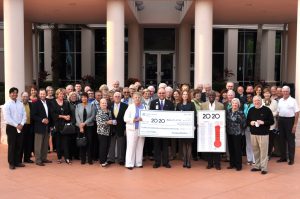Our rapidly changing world creates new challenges and opportunities for employers as they strive to keep workers productive, happy and part of their long-term team.
“We are light years away from the industrial revolution and the work-a-day mentality,” comments Kate Shockey, president of the Flagler/Volusia Chapter of the Society for Human Resource Management (SHRM), the world’s largest professional HR organization.
Shockey and other HR professionals emphasize the importance of “culture” in the work environment, which Shockey describes as “the water we swim in.” And much of it is based on employee recognition and appreciation.
“When employees are at work, they don’t want to be in an environment that feels bad. They want to be in an environment where they are part of the group.”
She encourages employers to “listen” to their team members. “Your current and future staff want to feel accomplished and part of the success of the organization.”
This concept is echoed by Cheryl Tanenbaum, senior vice president and chief financial officer of Intracoastal Bank, headquartered in Palm Coast. “We offer a great work environment, and our culture is conducive to keeping our associates long term,” she says. “We encourage our team to think and act like business owners and look for ideas to help improve our business. Management attributes much of our success to this.”
Management leaders at Coastal Cloud also agree. “Striking a balance between work and quality of life is the heart of our culture,” explains Sara Hale, co-founder and managing partner of the national Salesforce consulting firm, also based in Palm Coast. “Instead of a stiff 9 to 5 ‘brick and mortar’ expectation, we encourage flexibility and balance. Parents can be parents, people can go to the doctor, and families can take vacations.”
“Today’s employees are independent, self-thinkers,” Shockey notes. “I encourage organizations to embrace this and step away from the time bound mentality with managers who micro-manage. This may well be the essential step to permitting the sense of accomplishment.”
Shockey is a strong proponent of ROWE (Results Only Work Environment). ROWE is a contemporary management strategy that focuses everyone’s attention solely on measurable results. “Manage the work, not the people” is the foundation of ROWE, Shockey explains. This requires more flexibility with staff management, in areas such as work hours, scheduling and decision making.
Coastal Cloud follows this mentality. “Instead of providing a set number of days off, Coastal Cloud trusts its team members to take an appropriate amount of time off throughout the year. Employees use Ownership Thinking to set their own Responsible Time Off (RTO) with a shared calendar. This level of trust has contributed to the company’s impressive retention rate.”
Other tangible incentives also play an important role in the effort to keep employees long term.
Shockey believes that the most important tangible incentives are the basic essentials – medical/ life insurance and a retirement plan, for health security now and a positive financial future.
“We offer a robust benefit and compensation package,” explains Tanenbaum at Intracoastal Bank. “Our healthcare plans for employees are free,” she says, adding that the company also provides other free benefits such as short- and long-term disability and life insurance, as well as tuition reimbursement and a matching 401K plan. Intracoastal also offers an ESOP program (employee stock ownership plan).
Also a major player in Flagler’s national business sector is Yellowstone Landscape, a commercial landscape company that has experienced significant expansion in recent years. Headquartered in Bunnell, Yellowstone Landscape is the largest privately-held commercial landscaping company in North America with more than 50 locations across the South, Southwest and Midwestern United States. Yellowstone recorded revenue of just under $360 million in 2020, according to Joseph Barnes, the firm’s marketing director.
With such a large service sector, productivity and employee retainment are major concerns. “We struggle with retention in our labor ranks,” comments Elise Johnson, senior vice president of Human Resources. “It’s a difficult job. So we are constantly focusing on how to keep our workers. Benefits are many when we are successful but consistency with our clients’ properties and reliability of our workforce are huge,” she emphasizes. Johnson explains that Yellowstone offers incentives to nearly all employees. The management team receives an annual incentive based on company and branch performance and a benefits package of medical and life insurance. And front-line workers receive a bonus for working through the entire busy summer season.
There also are creative incentives that all three firms offer – from virtual ‘happy hours’ and team get-togethers to employee ‘excellence recognition’ celebrations.
The leaders at Yellowstone, Intracoastal Bank and Coastal Cloud all speak proudly of their employment retainment.
Tanenbaum at Intracoastal says: “We are a firm believer of promoting from within and this is part of our succession planning. We get to know our employees and work towards developing them for future growth. Recruiting is time consuming and costly. It is important to hire the right people and work with them so that they are happy and will stay.”
SHRM Chapter President Shockey agrees. “The benefits of retention go beyond the typical turnover costs of recruiting and orienting,” she concludes. “When you retain staff, you are retaining implicit knowledge that supports the team dynamics.”










